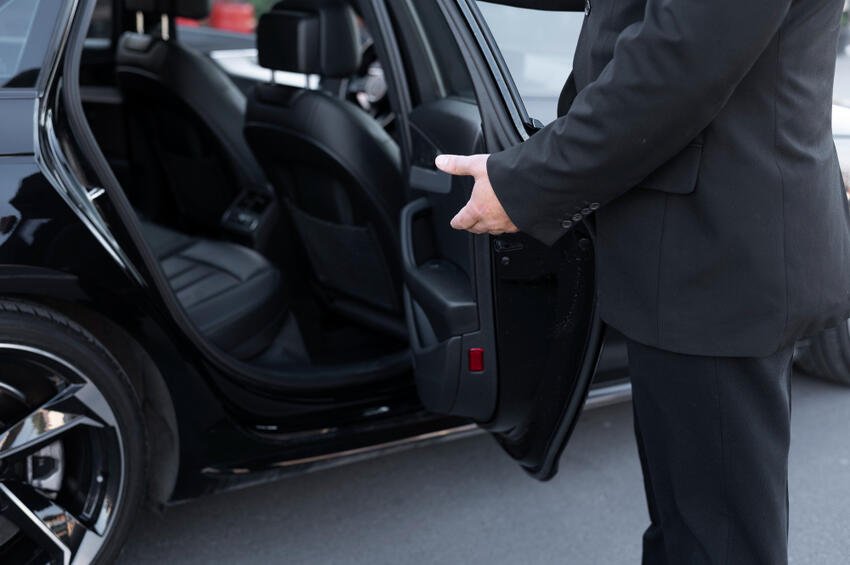Hiring safe and skilled commercial drivers is hard for many companies. Studies show that poor driver hiring can lead to accidents and high costs. This guide will walk you through steps to build a strong hiring process.
Keep reading to make better hires and boost safety.
Identify the Ideal Commercial Driver Profile
To find the best commercial drivers, know what qualifications and skills are needed. Think about key job tasks they must perform every day.
Define required qualifications and skills
Commercial drivers must hold a valid Commercial Driver’s License (CDL) for the class of vehicle they will drive. A clean driving record is important. Many companies require at least two years of similar driving experience. Candidates should know safety rules and federal regulations, including DOT compliance.
Good communication skills help drivers report issues and follow instructions. Physical fitness matters because loading and unloading cargo can be part of the job. Drivers need a strong focus to handle long hours on the road safely.
Employers often look for problem-solving skills in high-pressure situations, such as sudden weather changes or traffic delays. Basic mechanical knowledge helps drivers check vehicles for issues before trips begin.
Outline essential job functions
After listing the needed qualifications and skills, the focus shifts to outlining job duties. Drivers must safely operate large vehicles like tractor-trailers or box trucks for long hours. They check trip schedules, inspect their vehicle before trips, and report any problems right away. Loading and unloading cargo is often part of the work.
Drivers keep logs that match DOT rules. They need to follow all traffic laws and company safety standards at all times. Clear communication with dispatch teams is vital for smooth deliveries.
Drivers may need to adjust routes due to weather, road conditions, or delivery changes. Handling paperwork such as bills of lading is another key responsibility in the hiring process for commercial drivers.
To streamline onboarding and capture essential candidate details, consider using a commercial truck driver employment application system that centralizes the application process and ensures all necessary information is collected efficiently.
Conduct Comprehensive Background Checks
Background checks are key in the hiring process. They help you find out if a driver has a clean record and reliable work history.
Review motor vehicle records (MVR)
Check motor vehicle records (MVR) for each driver. These reports show accidents, speeding tickets, license suspensions, and other violations. A clean MVR proves the candidate values safety and follows driving laws. Insurance companies often require an MVR with no major issues in the past three to five years.
Review at least three years of records before hiring. Confirm that the applicant has a valid commercial driver’s license (CDL) without restrictions or recent suspensions. Many companies use the FMCSA Pre-Employment Screening Program to get detailed safety data. A solid hiring process starts with checking every driver’s MVR for any red flags.
Verify past employment and references
Verify past employment and references. Contact previous employers to confirm job titles, dates of employment, and duties performed. This step ensures that candidates have the experience they claim. It helps you understand their work ethic and reliability.
Reach out to references as well. Ask specific questions about the candidate’s skills and behavior on the job. This information will give you insight into how they may perform in your company, especially in terms of safety compliance.
Assess Driving Experience and Safety Record
Review the driver’s past driving history carefully. Look for any accidents, tickets, or violations that may show safety concerns.
Evaluate previous driving history and incidents
Check the candidate’s driving history. Look for any accidents, tickets, or violations. A clean record shows a commitment to safety and compliance. If there are incidents, ask for details. Understand what happened and how they responded.
Gaps in experience can raise concerns too. Look closely at any time off from driving jobs. This may signal issues with safety or performance. Thoroughly evaluate these factors to make an informed hiring decision.
Check for gaps or inconsistencies in experience
Evaluating previous driving history and incidents helps to shape a complete picture of the candidate. Gaps or inconsistencies in experience can indicate potential issues. If a driver has unexplained time away from the job, it raises questions. Verify each year of their work history for accuracy. Inconsistencies might suggest that they are hiding something.
Ask candidates to explain any gaps during interviews. Their answers can provide insights into their reliability and commitment to driving roles. Understanding their full background is key in choosing safe drivers who comply with regulations and safety standards.
Implement Effective Screening and Testing
Road tests are key to seeing a driver’s skills in action. Substance use screenings help ensure safety on the road.
Conduct road tests to evaluate skills
Conduct road tests to assess driving skills. This step is crucial in the hiring process for commercial drivers. It allows you to see how well a candidate can handle a vehicle on the road. Set clear criteria for the test, including safe driving practices and route management.
Observe their performance closely during the test. Check if they follow traffic laws and use proper techniques for turning, merging, and parking. Assess their ability to stay calm under pressure as well as manage unexpected situations. A thorough evaluation here helps determine if a driver meets your company’s safety standards.
Perform substance use screenings
Substance use screenings are vital for hiring commercial drivers. These tests help ensure that candidates will not use drugs or alcohol while on the job. Employers should follow federal regulations, which require testing for substances like marijuana and cocaine.
Screenings can take place before hiring or randomly during employment. A negative result shows commitment to safety and compliance. Positive results may disqualify a candidate from driving roles. This process adds an essential layer of protection for the company and its employees.
Strengthen the Interview Process
Ask clear questions that show how candidates act in real situations. Focus on their safety habits and understanding of rules.
Ask targeted and situational questions
Use targeted questions during interviews. These should relate to real-life scenarios a driver might face. For example, ask about handling difficult weather or dealing with road hazards. Situational questions reveal how candidates think on their feet.
Focus on safety and compliance in your queries. This ensures candidates understand regulations and best practices. Their answers provide insight into their experience and judgment as drivers. Clear questions will help you assess if they align with your company’s values. Next, it’s crucial to conduct thorough background checks for each candidate.
Focus on safety and compliance awareness
Safety and compliance are vital in the hiring process for commercial drivers. Employers must ensure that candidates understand safety regulations. A strong focus on these areas can help prevent accidents and promote a safe work environment. Use interviews to assess a driver’s knowledge of safety protocols. Asking specific questions about past experiences can reveal their commitment to following rules.
Checking for certifications is also essential. Ensure applicants have all necessary licenses and endorsements based on local laws. This verification shows they take safety seriously.
Conclusion
Building a solid hiring process for commercial drivers is key. Focus on clear qualifications and effective screening methods. Use thorough background checks to find the best candidates. Engage in meaningful interviews that emphasize safety and compliance. A strong process leads to better hires, safer roads, and a great team culture.

Software Testing Lead providing quality content related to software testing, security testing, agile testing, quality assurance, and beta testing. You can publish your good content on STL.



